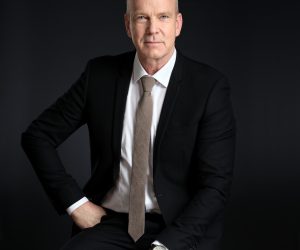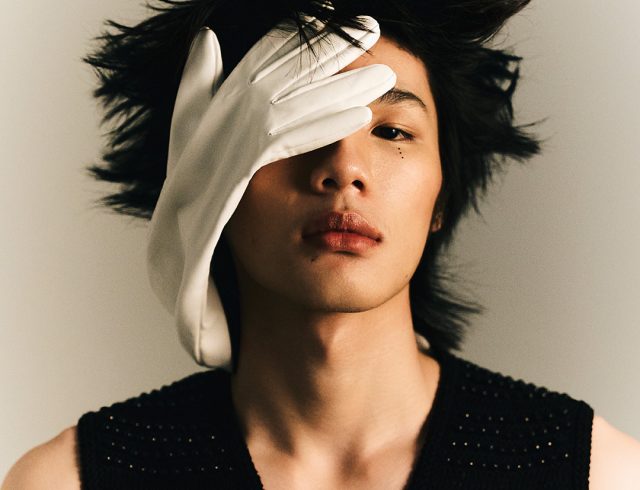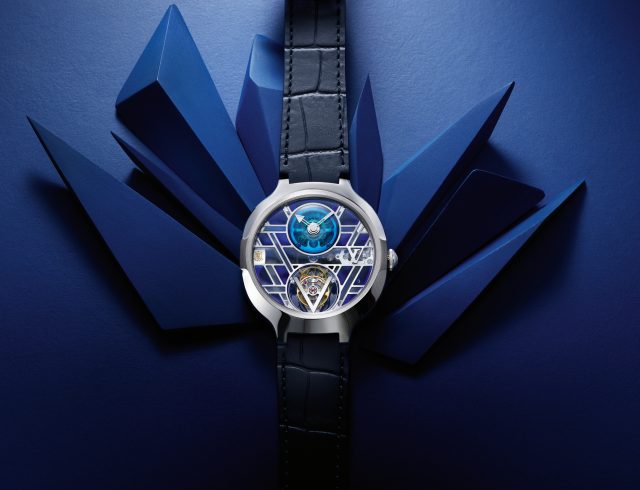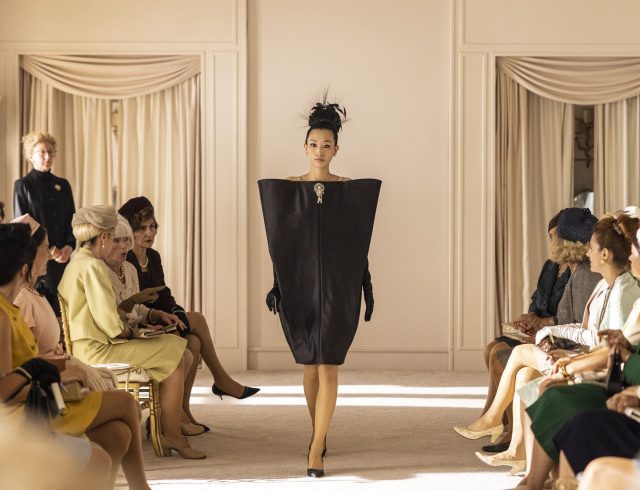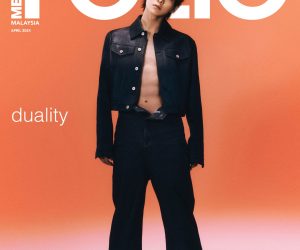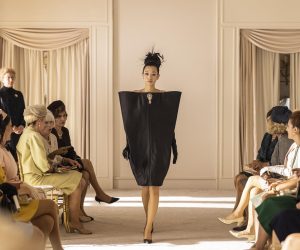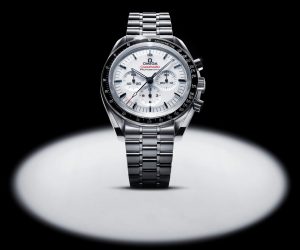
Dense, dynamic, and detailed – the classical Batuan-style artworks originating from the village of Batuan in Gianyar, South Bali, are immediately identifiable by their dramatic portrayals of legendary scenes or themes from daily lives. Albeit similar in concept to the Italian Baroque paintings from the 17th century, the Batuan style was indeed in a league of its own since, in contrast to its counterpart of the Ubud style up in the North, it had minimal to no outside influences, thus making it one of Bali’s most original and organic artforms, and also an immediate source of inspiration for a new age of Balinese artists like Agus Saputra.
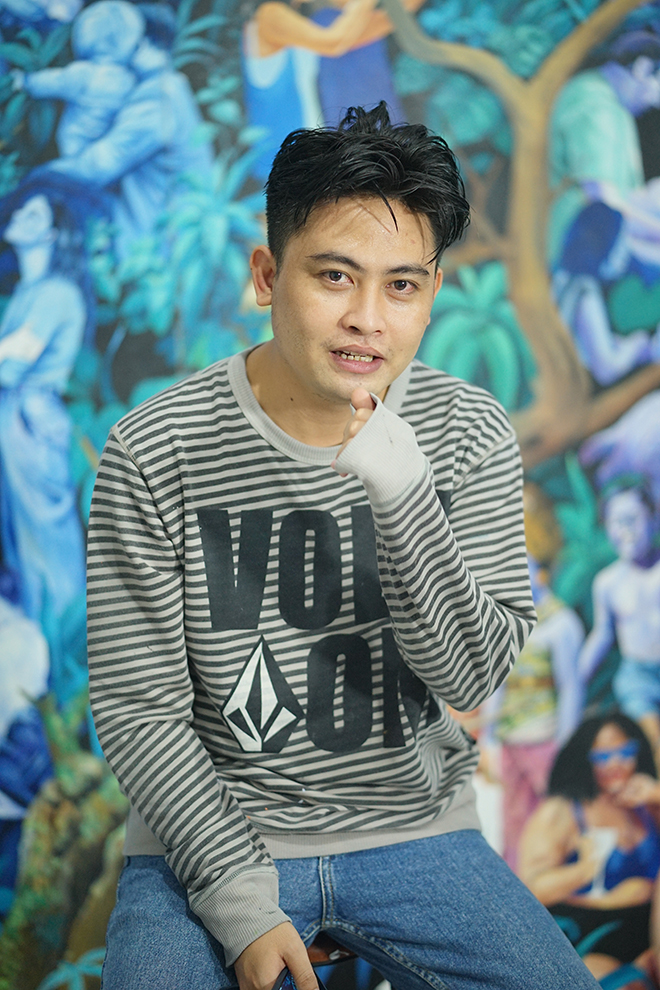
Born in Payangan in 1992, you graduated in Bali (Denpasar) where you are now established. How was your initiation into art like?
In Junior High School, I started with sketching and drawing, and at times, attempted to paint. In Senior High School, I attended a school that offered a Fine Arts major. In 2008, I was fortunate to have been offered an internship under Indonesian artist Gede Mahendra Yasa. It was through him and an extensive learning process that I was able to cultivate my interest in Fine Arts, especially paintings. Thereafter, I furthered my creative studies at the Indonesian Institute of the Arts Denpasar to obtain my academic degree.
Whilst working alongside acclaimed Indonesian artist Gede Mahendra Yasa, what were the key learnings you received from this experience?
Aside from painting techniques taught to me in his studio, I was also guided on how to view and analyse the paintings through knowledge in the subjects and looking at things through different lenses. Moreover, he granted me access to his library to read and research on art and art history, which I had done so voraciously. I do acknowledge that he was paramount to my development as an artist and I am grateful to him for that.
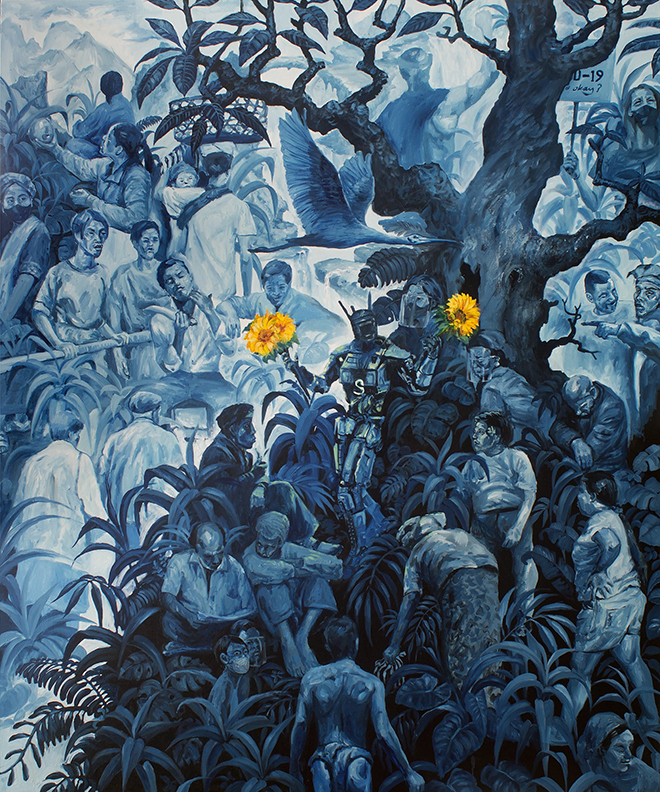
Hope #2, 150x180cm, oil on canvas, 2020
What are the various considerations that go into the construction of your artworks?
My paintings are mostly large-scaled ones since the size does matter in my storytelling process. As a Balinese, working up from traditions is second nature to me, and telling stories comes in close second (think wayang kulit). The Batuan style which I have adopted in my works blends harmoniously with the imposing dimensions of the canvas. My rendition of said style retains its key component of creating a dense and compact landscape of elements that correspond and interact with one another. As the visuals expand from one area of the composition to another, so do the stories that weave through these imageries, thus creating a narrative that unfolds in different ways for every audience of mine.
You speak much of the narratives in your works; could you elaborate on some of these?
There have not been many records of the Batuan art style that is easily accessible to the masses. I have taken it upon myself to continue the legacy of this art form that is unique to our rich Balinese culture and to further document its application in modern times.
In a few of my recent works, I have purposefully conceptualised them around celebrating the efforts of I Nyoman Ngendon – one of the first Batuan painters who embraced the modernization of Balinese art that took place around the beginning of the 1930s. On top of that, my compositions also pay tribute to a few notable personalities who played a role in pushing the recognition of the Batuan art form into the spotlight. Russian-born German primitivist painter Walter Spies, Dutch artist Johan Rudolf Bonnet, and Swiss painter Theo Meier lived and worked extensively on the island of Bali, which contributed to its art scene significantly. Anthropologists Margaret Mead and Gregory Bateson who were stationed in the village of Batuan to conduct research were also instrumental in attracting the attention of Western cultural figures to Balinese culture and art. Their appearances, coupled with Indonesian pop-culture icons, within my painting Homage to 5 Foreigners reposition the value of modern Balinese art as a potential conduit for a still-life documentary that serves to inform and educate that the Batuan style is actually largely and positively influenced by external injections.
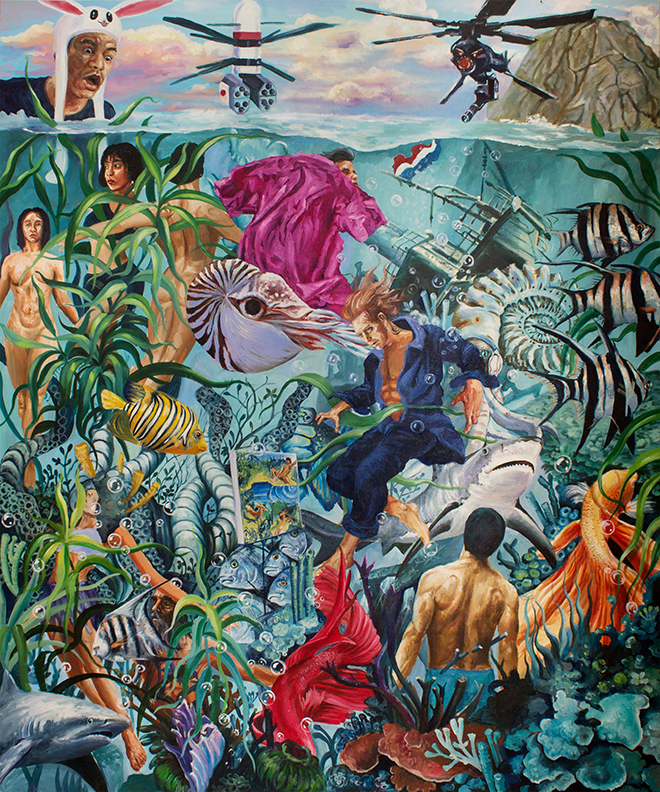
Kau kah itu tuan Spies?, 150x180cm, oil on canvas, 2020
What are the next steps you will be taking for your career as an artist?
I am a firm believer that artists are knowledge powerhouses who are in the field to educate and enlighten the public on subjects they are most familiar with. I intend to continue conveying what I know about history and my personal experiences through my paintings that will only grow in dimensions with each piece I produce. I do have an intention to ultimately paint a piece so large the human subjects in my work will be directly proportionate to the size of an average human.
In the coming years, I will be building towards my solo exhibitions in Jakarta, and Bali, whilst hoping to further my exhibitions throughout South East Asia.
By Ryan Mario. Agus Saputra is contactable via Instagram and [email protected]. CG Art Space Gallery which showcases Agus Saputra’s work is contactable via Instagram or christianagou





